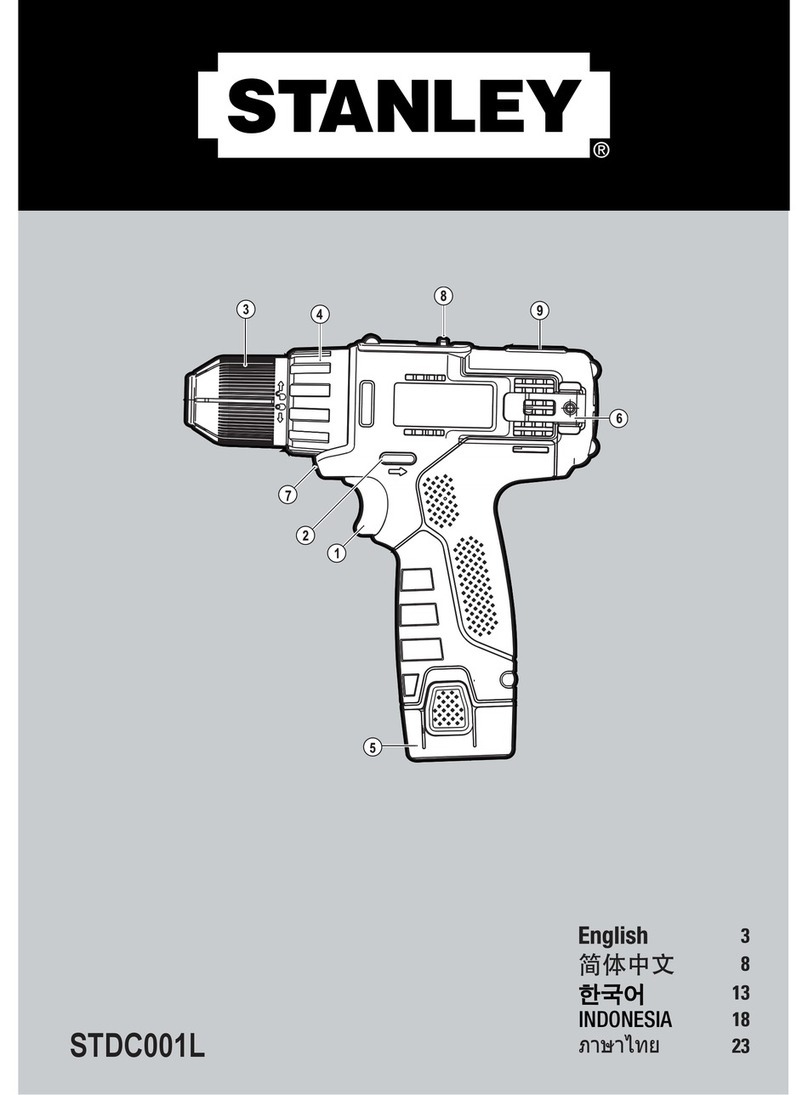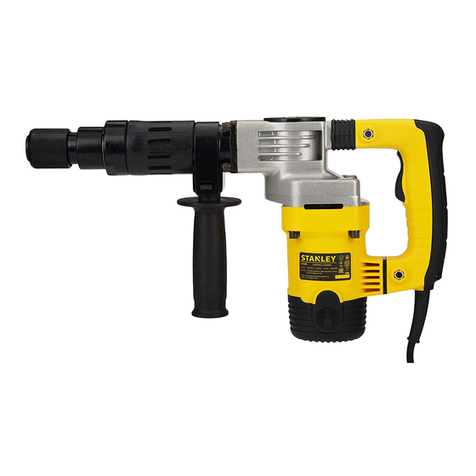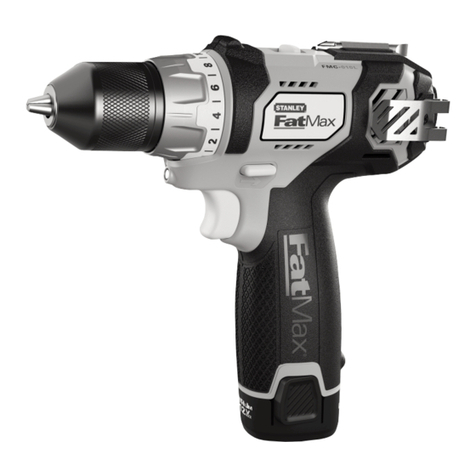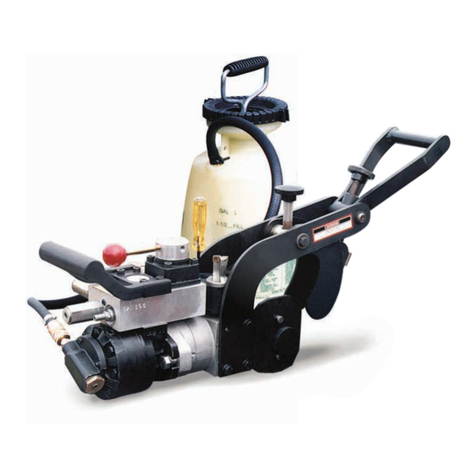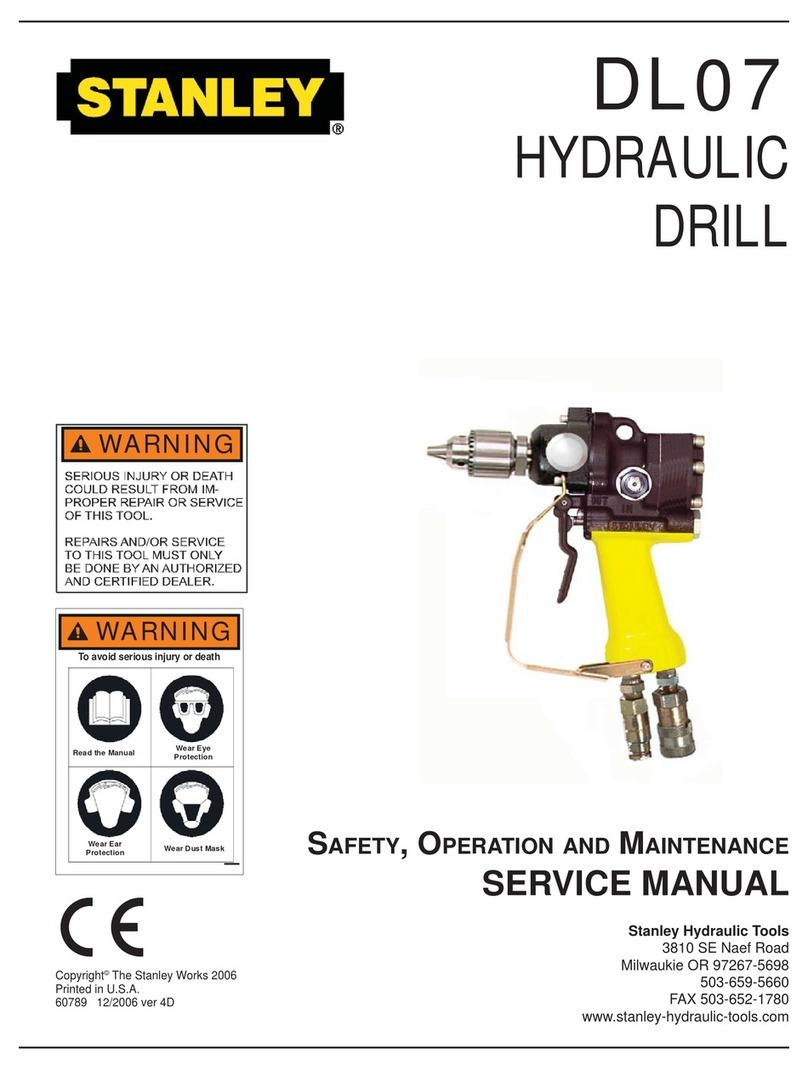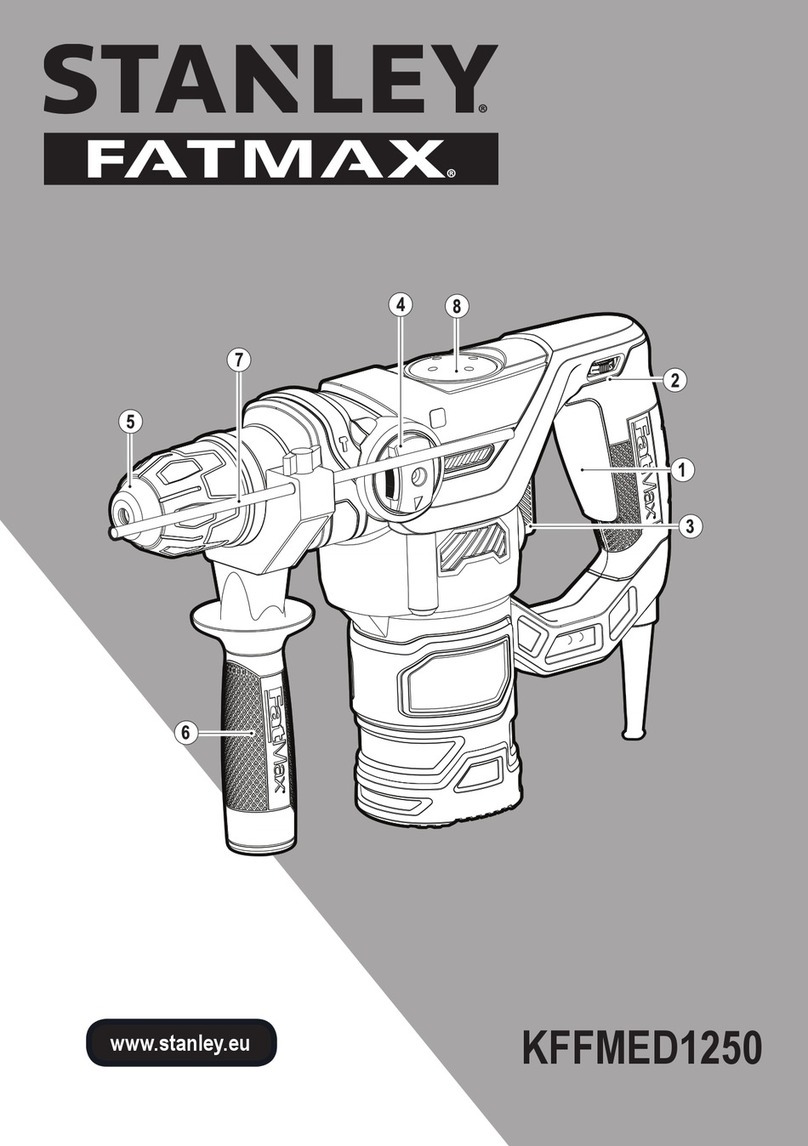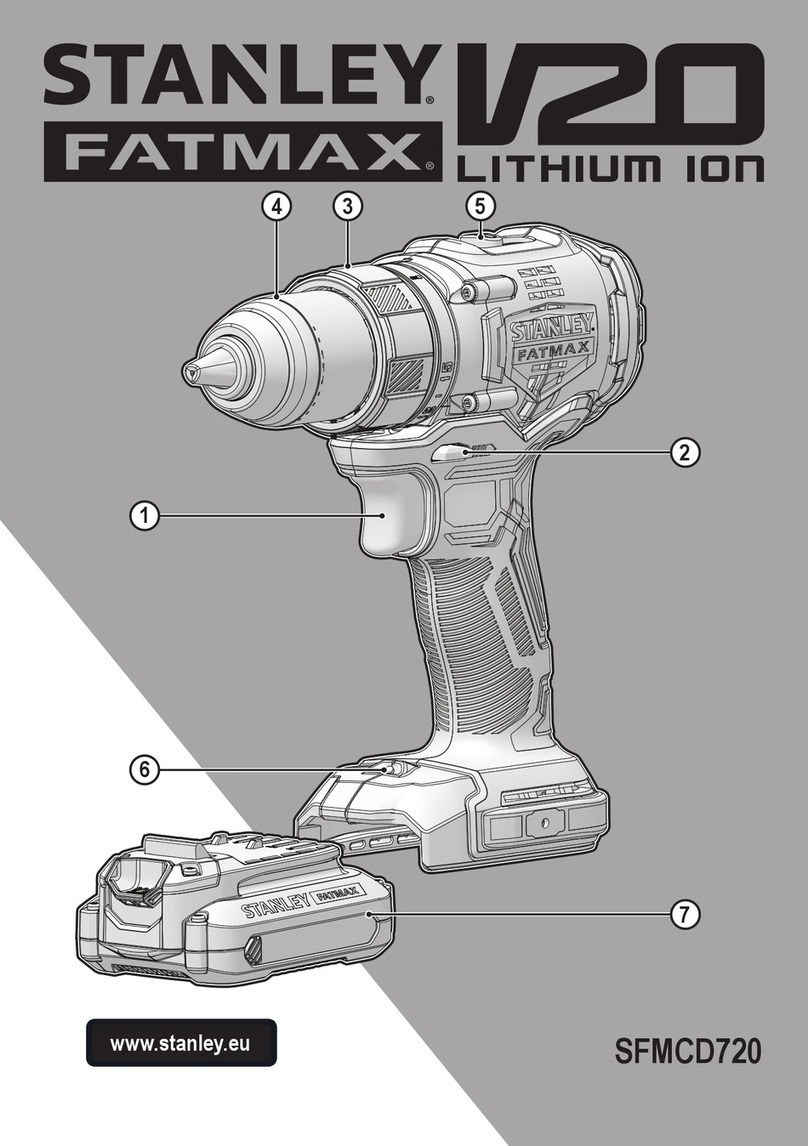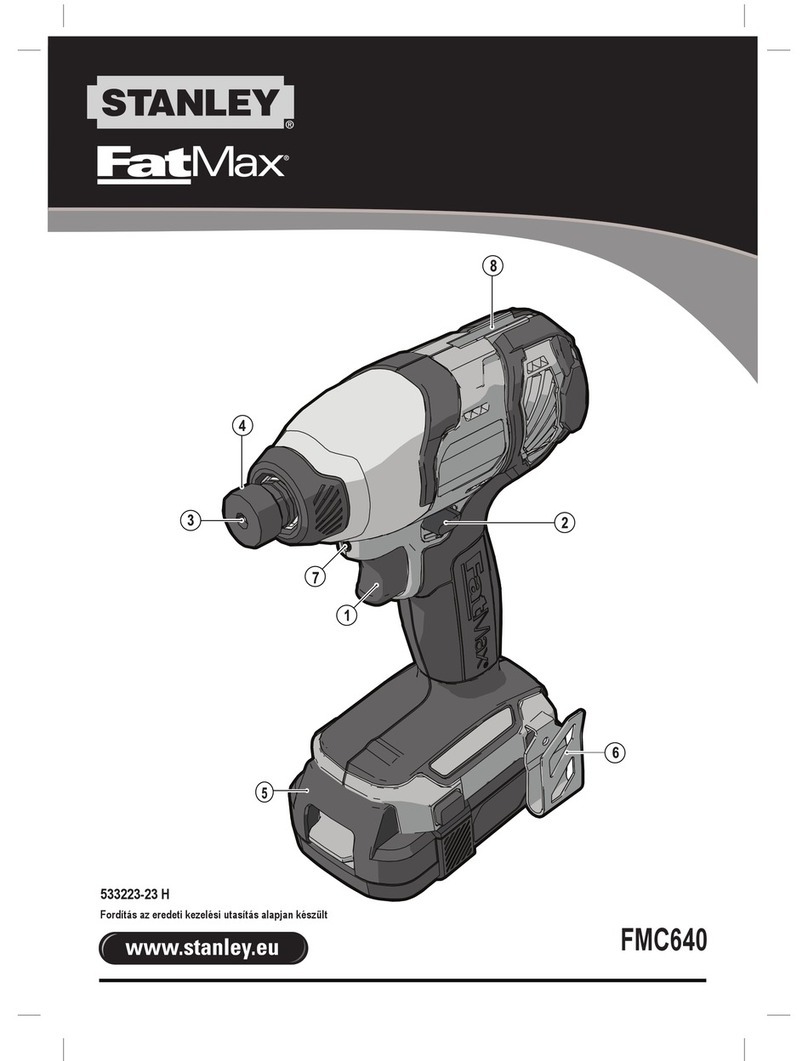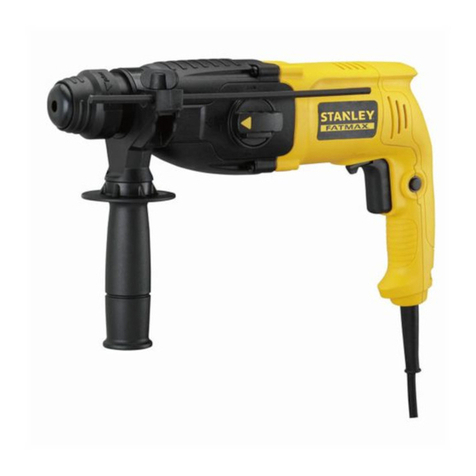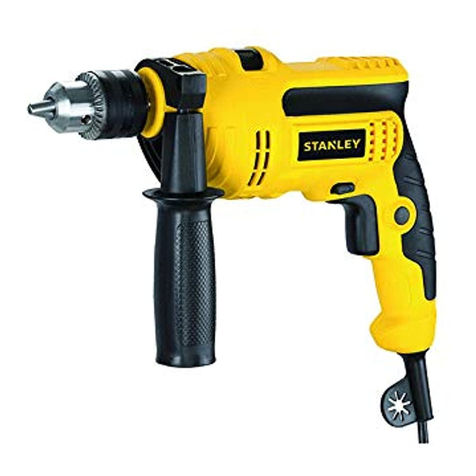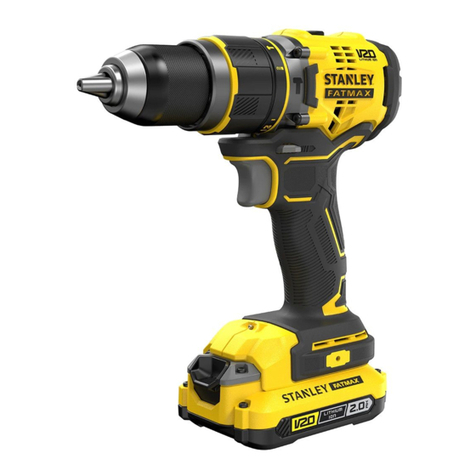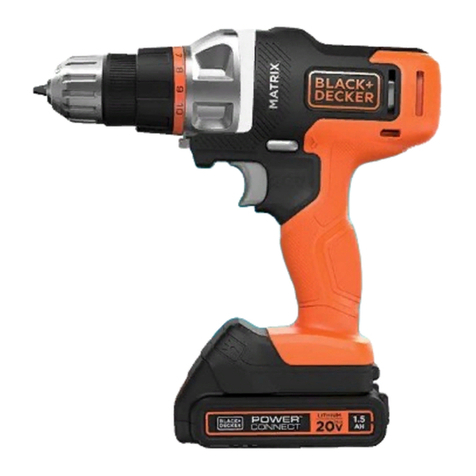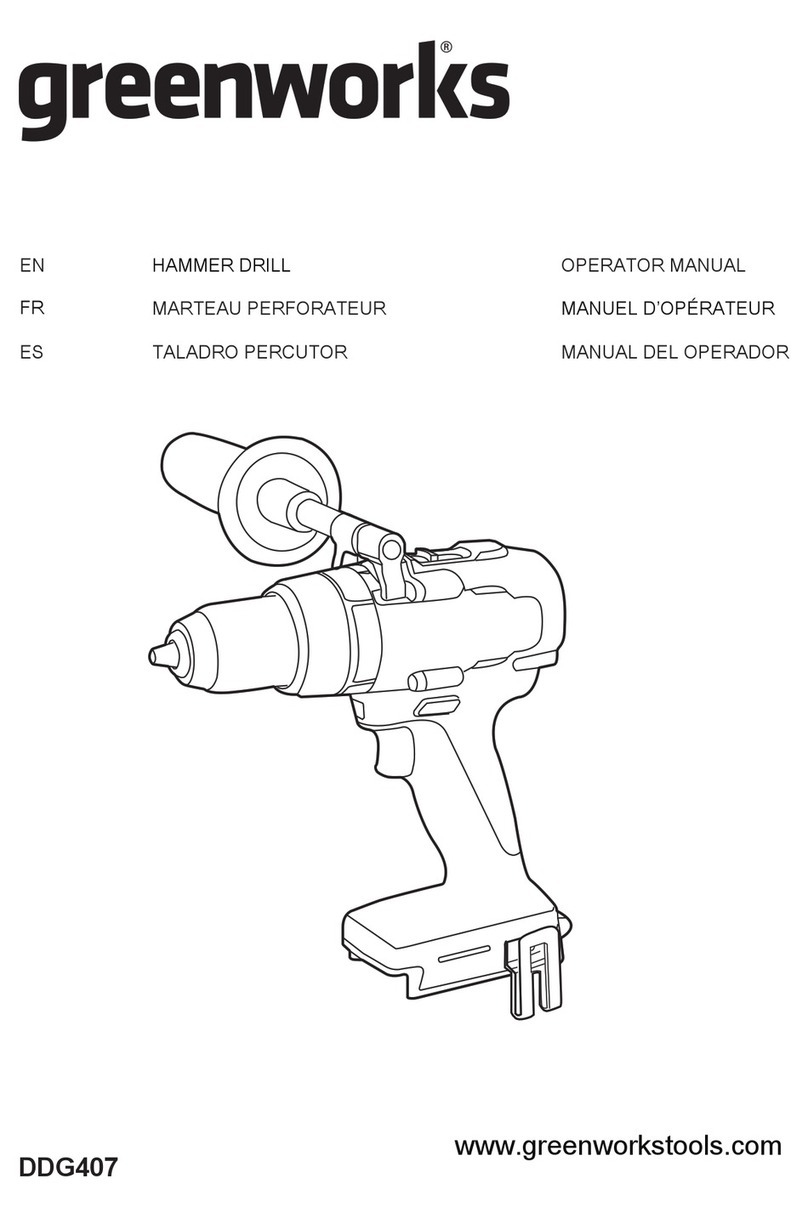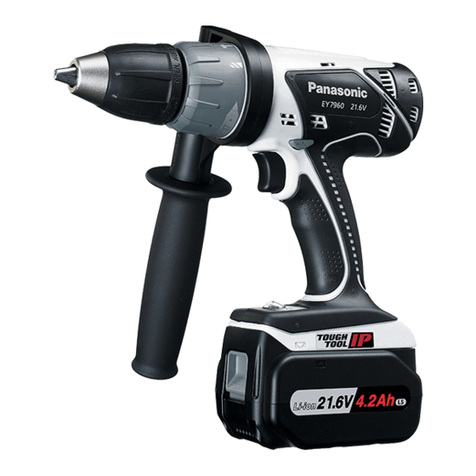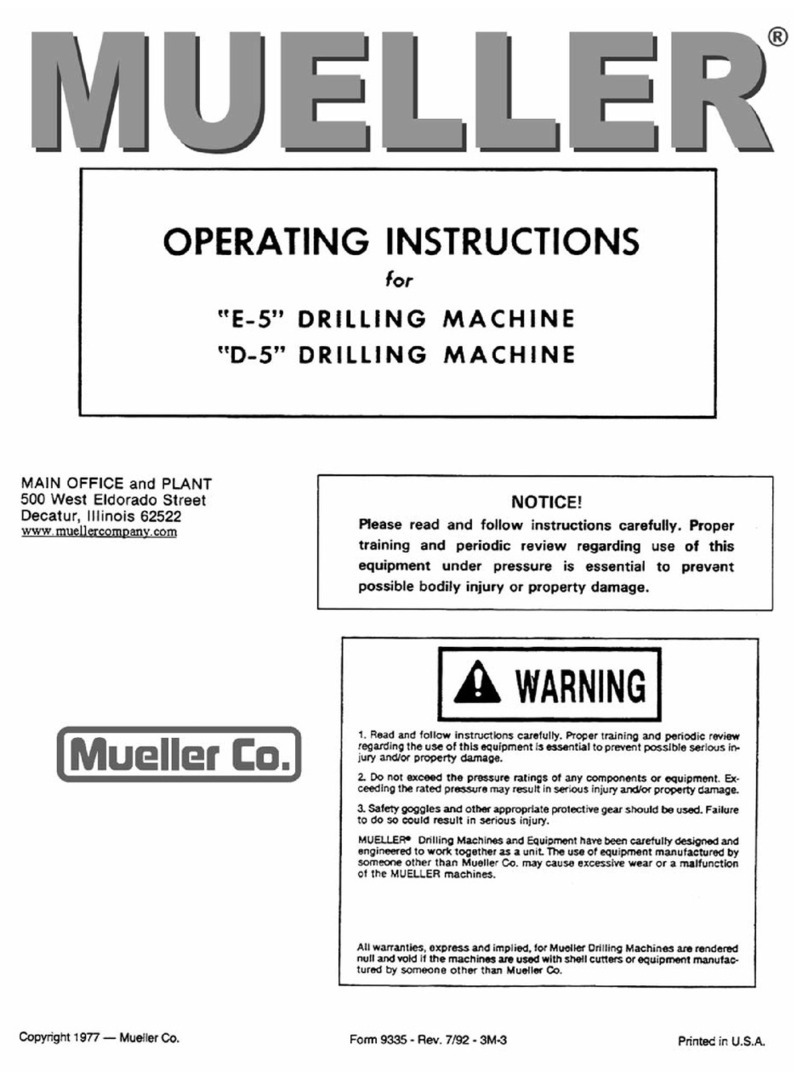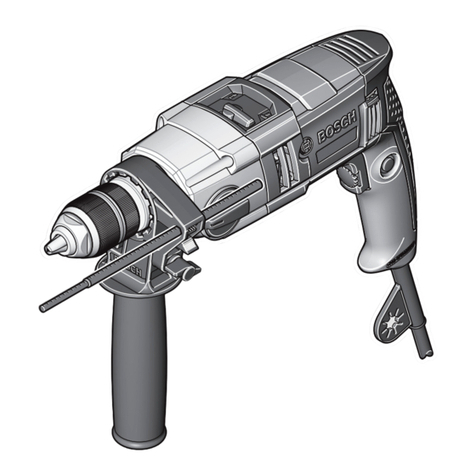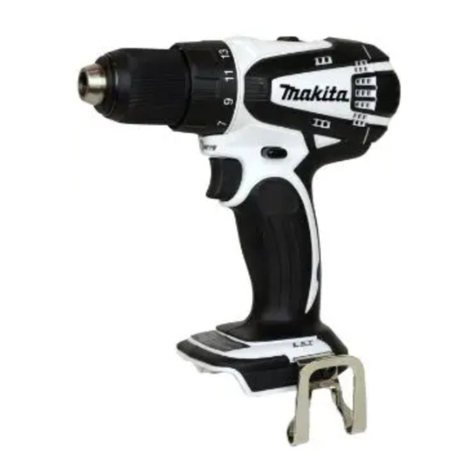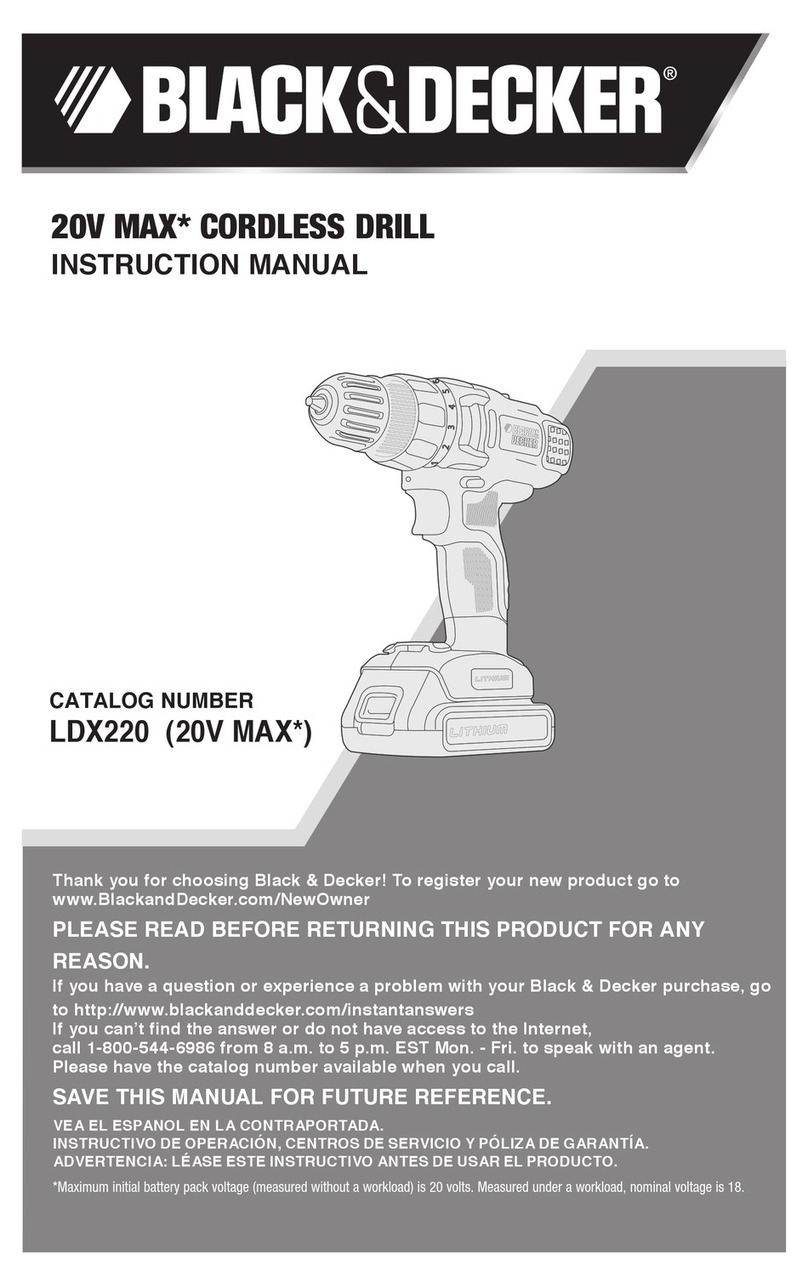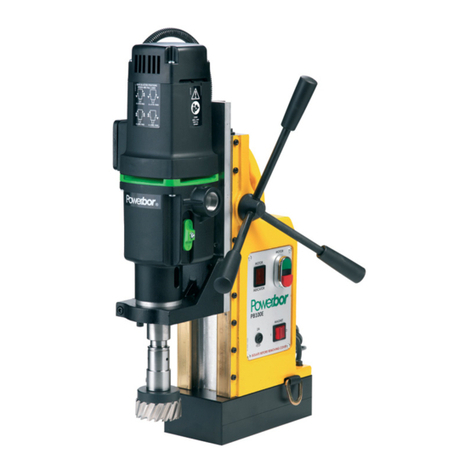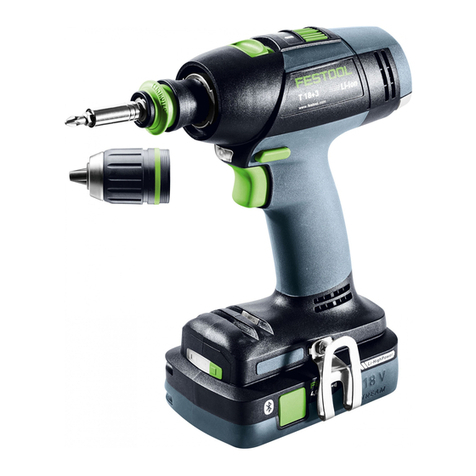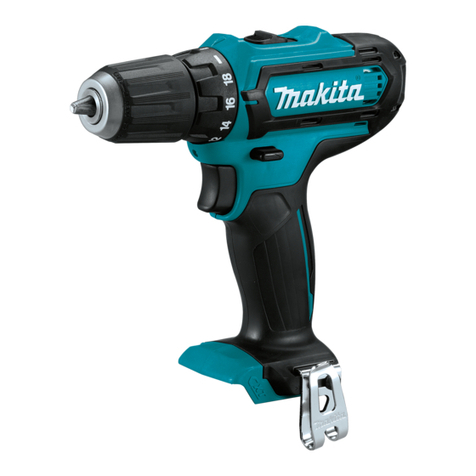3
f) Dress properly. Do not wear loose clothing or jewelry. Keep your hair, clothing and
glovesaway from movingparts.Loos cloth s, j w lry or long hair can b caught in moving parts.
g) If devices are provided for the connection of dust extraction and collection facilities,
ensure these are connected and properly used. Us of dust coll ction can r duc dust-
r lat d hazards.
4) POWERTOO USE AND CARE
a) Do not force the power tool. Use the correct power tool for your application. Th corr ct
pow r tool will do th job b tt r and saf r at th rat for which it was d sign d.
b) Do not use the power tool if the switch does not turn it on and off. Any pow r tool that
cannot b controll d with th switch is dang rous and must b r pair d.
c) Disconnect the plug from the power source and/or the battery pack from the power
tool before making any adjustments, changing accessories, or storing power tools. Such
pr v ntiv saf ty m asur s r duc th risk of starting th pow r tool accid ntally.
d) Store idle power tools out of the reach of children and do not allow persons unfamiliar
with the power tool or these instructions to operate the power tool. Pow r tools ar
dang rous in th hands of untrain d us rs.
e) Maintain power tools.Check for misalignment or binding of moving parts,breakage of parts
and any other condition that may affect the power tool’s operation.If damaged,have the power
tool repaired before use.Many accid nts ar caus d by poorly maintain d pow r tools.
f) Keep cutting tools sharp and clean. Prop rly maintain d cutting tools with sharp cutting
dg s ar l ss lik ly to bind and ar asi r to control.
g) Usethepowertool,accessories andtool bits,etc.inaccordancewiththese instructions,
takingintoaccountthe workingconditionsandtheworktobe performed.Us of th pow r tool
for op rations diff r nt from thos int nd d could r sult in a hazardous situation.
5) SERVICE
a) Have your power tool serviced by a qualified repair person using only identical replacement
parts.This will nsur that th saf ty of th pow r tool is maintain d.
SPECIFIC SAFETY RU ES
•Wear ear protectors with impact drills. Exposure to noise can cause hearing loss.
•Use auxiliary handles supplied with the tool. Loss of control can cause personal
injury.
•Hold power tools by insulated gripping surfaces when performing an operation
where the cutting tool may contact hidden wiring or its own cord. Contact with a
"live" wire will make exposed metal parts of the tool "live" and shock the operator.
•Use clamps or another practical way to secure and support the work piece to a
stable platform. Holding the work by hand or against your body leaves it unstable and
may lead to loss of control.
•Keep your hair, clothing, and gloves away from air vents. Air vents often cover
moving parts in which these items can be caught.
•Keep handles dry, clean, free from oil and grease. It is recommended to use rubber
gloves. This will enable better control of the tool.
WARNING: ALWAYS usesafetyglasses.EverydayeyeglassesareNOTsafetyglasses.Also
usefaceordustmaskifdrillingoperationisdusty.ALWAYSWEARCERTIFIEDSAFETYEQUI MENT:
• ANSI Z87.1 eye protection (CAN/C A Z94.3),
• ANSI S12.6 (S3.19) hearing protection,
• NOSH/OSHA respiratory protection.
WARNING: Some dust created by power sanding, sawing, grinding, drilling, and
other construction activities contains chemicals known to the state of California to cause
cancer, birth defects or other reproductive harm. Some examples of these chemicals are:
• lead from lead-based paints,
• crystalline silica from bricks and cement and other masonry products, and
• arsenic and chromium from chemically-treated lumber.
Your risk from these exposures varies, depending on how often you do this type of work.
To reduce your exposure to these chemicals: work in a well ventilated area, and work
with approved safety equipment, such as those dust masks that are specially designed to
filter out microscopic particles.

